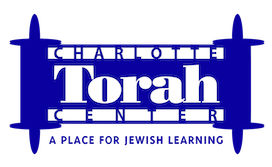The Jew You Are, Not Just the Jew You Do
When we think of mitzvos, we often picture actions: lighting like lighting Shabbos candles, eating matzah, sitting in a Sukkah or praying, each of which is a concrete behavior with a beginning and end. You do them and then you move on. But there are mitzvos that are different—Tefillin, Tzitzis, and Mezuzah. These mitzvos don’t call attention to themselves with dramatic ceremony or movement, rather, they quietly shape the Jewish landscape, defining how a Jew looks, how a Jewish home feels, and ultimately, how we carry our identity in the world.
Tzitzis are worn daily and are constant fringes of faith. Tefillin are wrapped on the head and arm; they were once meant to be worn all day. Wearing tefillin during the morning service is a symbolic statement declaring G-d’s name is upon you. (Deuteronomy 28:10). When a Mezuzah is attached to a doorframe it silently declares that this is a Jewish home.
These mitzvos aren’t merely actions we do; they are declarations accompanying a Jew throughout the day. We wear these mitzvos, we don’t merely do them. When a boy becomes 13, he doesn’t just start doing more Jewish stuff, he becomes visibly Jewish in a new and private way and steps into a new identity.
Imagine a young knight in training in a medieval kingdom. He trains for years and studies fencing, dueling, honor, and strategy, but there is one moment that changes his identity, when the king places the royal crest upon his chest. From that moment onward, he doesn’t just fight for the king — he represents the king. Wherever he goes, people see the emblem and know whom he serves. His very presence takes on a new and greater significance because he now officially represents the king.
So too, the Jew wears God’s emblem. Tzitzis are like the fringes of that crest and Tefillin are its seal on his body. They silently say, I stand for meaning and something holy. When those symbols are worn each morning, they declare this person belongs to a Godly nation. This new reality transforms how we think about our daily lives as Jews. It’s easy to reduce Judaism to rituals and checklists: Did I daven (pray)? Did I give tzedakah?
The deeper layer of Torah asks us not just to do, but to become by allowing mitzvos to form our identity. This doesn’t mean walking around religiously loud. On the contrary, the beauty of these signs is that they’re unassuming but enduring, and become part of our being.
This idea is relevant wherever you find yourself on the spectrum of Jewish observance. If you’re new to mitzvos, don’t worry if things still feel external. These identity-forming mitzvos are meant to grow on you. A grandmother recently shared her emotions when she began lighting Shabbos candles decades ago. She did it because someone told her to do it for the children—to put a Jewish imprint into the home every week. At the time she was not involved in any mitzvah or Jewish practice, and she said it felt strange for the first few weeks. Then, suddenly, one Friday night when she lit the candles, she identified with what the candles present and how it affected her Jewish identity and the home she wanted to create.
If you’re long in the game, doing mitzvos for decades, it’s easy to let them become routine. Perhaps it’s time to reframe and view them as the silent glue holding our Jewish presence together—even when you’re tired, distracted, or in spiritual low tides.
When a boy or girl becomes a Bar or Bat Mitzvah, they become part of a legacy where every Jew, no matter their knowledge or level, can embody our covenant with G-d in how they appear, not just how they act.
May we all wear our mitzvos with humility and pride — not as burdens to perform, but as identities to inhabit.

